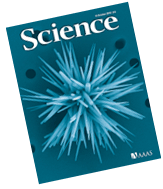Research from a Cullen College of Engineering professor has made the cover of one of the world’s most prestigious scientific journals.
The research by Jeff Rimer, assistant professor in the Department of Chemical and Biomolecular Engineering, appears in the Oct. 15 issue ofScience. As one of the college’s newest faculty members, Rimer conducted this work as a postdoctoral researcher in the lab of Michael Ward at New York University’s Molecular Design Institute.
This research explores two possible drug targets for combating a rare type of kidney stone. While roughly 10 percent of the country suffers from calcium-based stones, some 20,000 people in the United States have stones caused by a genetic disorder causing a buildup of the amino acid L-cystine. These kidney stones form more frequently than calcium-based stones and are far more debilitating, with most patients requiring regular dialysis and unable to work. The common prescriptions for L-cystine stones include restriction of dietary sodium and protein intake; high fluid intake; and medications that react with L-cystine to form more-soluble molecules but have troubling and sometimes serious side effects.
The paper in Science explores the effectiveness of two molecules in preventing the formation of L-cystine crystals. These molecules act as “tailored growth inhibitors” by binding to crystal surfaces and physically blocking the attachment of additional L-cystine. As a result, crystal growth is substantially reduced.
“What happens in the presence of these inhibitors,” said Rimer, “is that the preferred direction of crystal growth is hindered, causing a shift in size and shape from large platelets to much smaller needles. The result is a 1000-fold reduction in crystal volume.” Not only do smaller crystals form, he added, but they appear less likely to aggregate into stones.
While these results are based on laboratory testing and not human or animal models, they have clear implications for those suffering from L-cystine-based kidney stones. With smaller crystals and the likelihood of less crystal aggregation, fewer stones should form. Instead, L-cystine will primarily remain dissolved in urine and eventually expelled.
The next step of this research, which will be carried on at the NYU School of Medicine, will be to examine the toxicity of these compounds and determine their bioavailability, i.e., how much of the compound, when taken orally, survives the digestive track and makes it to the kidney.
Should these investigations show one or both of the compounds to be safe and effective, tens of thousand of people suffering from L-cystine kidney stones will see their lives dramatically changed for the better.

